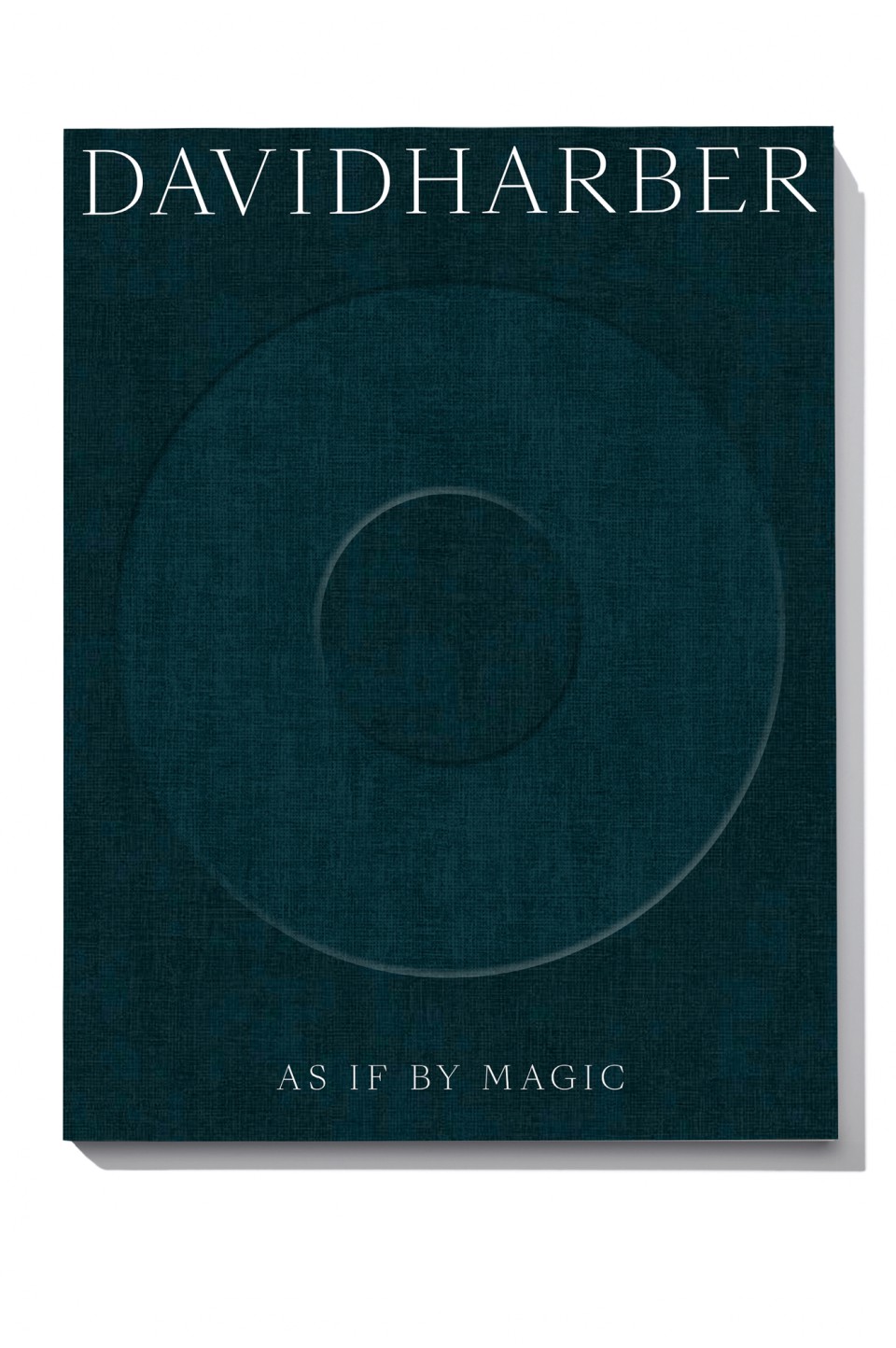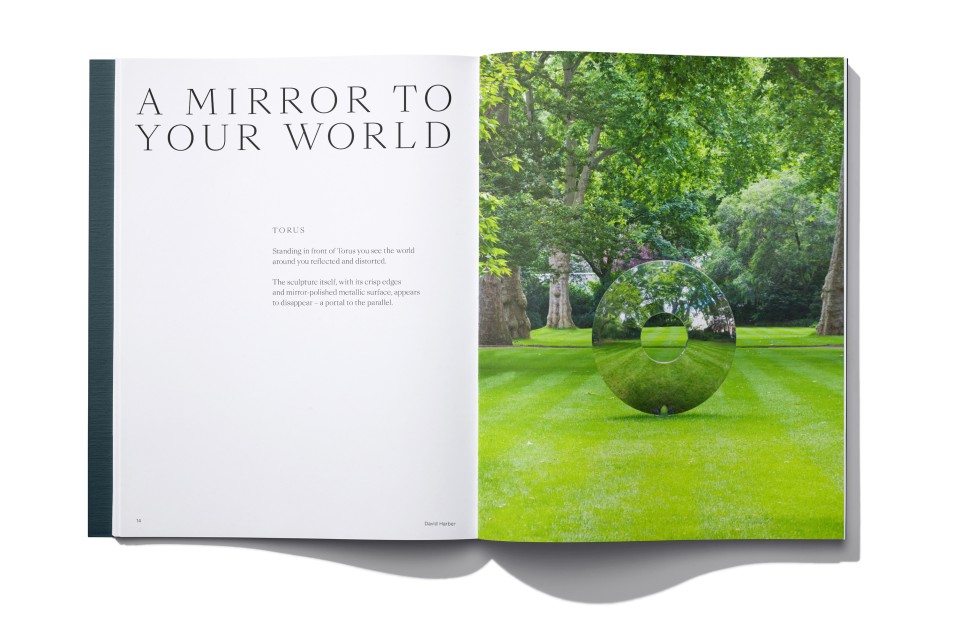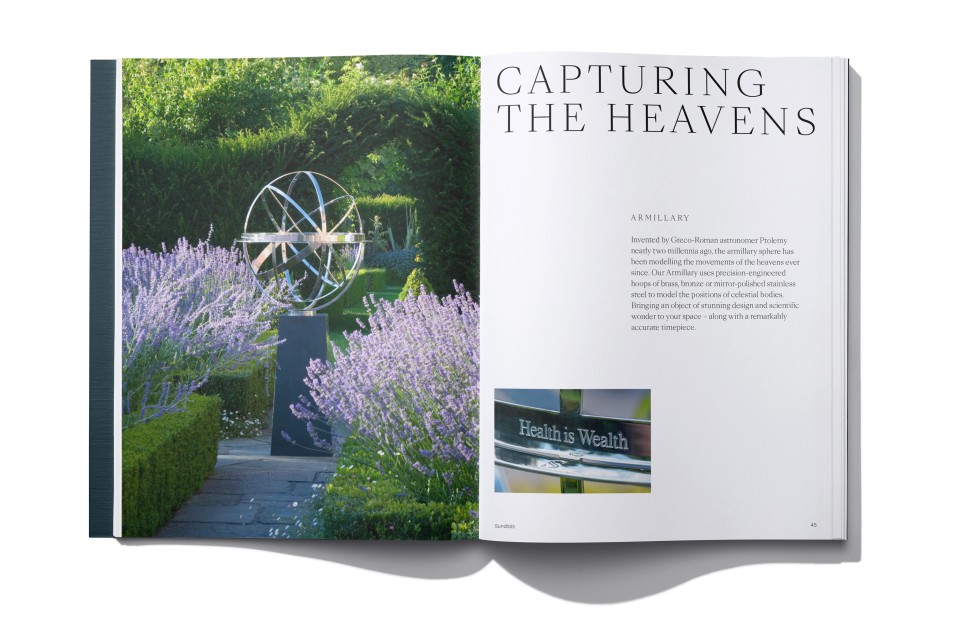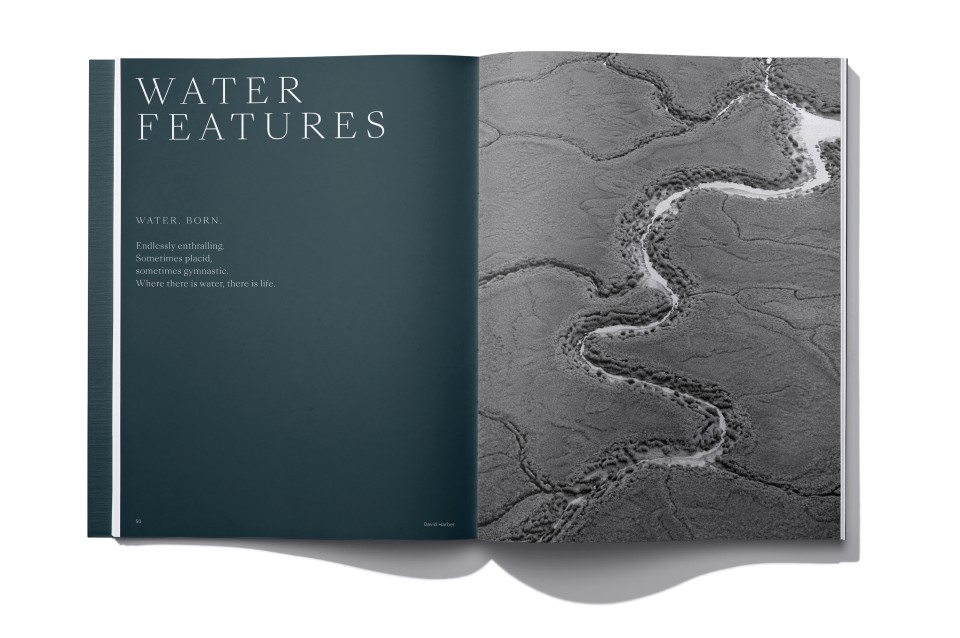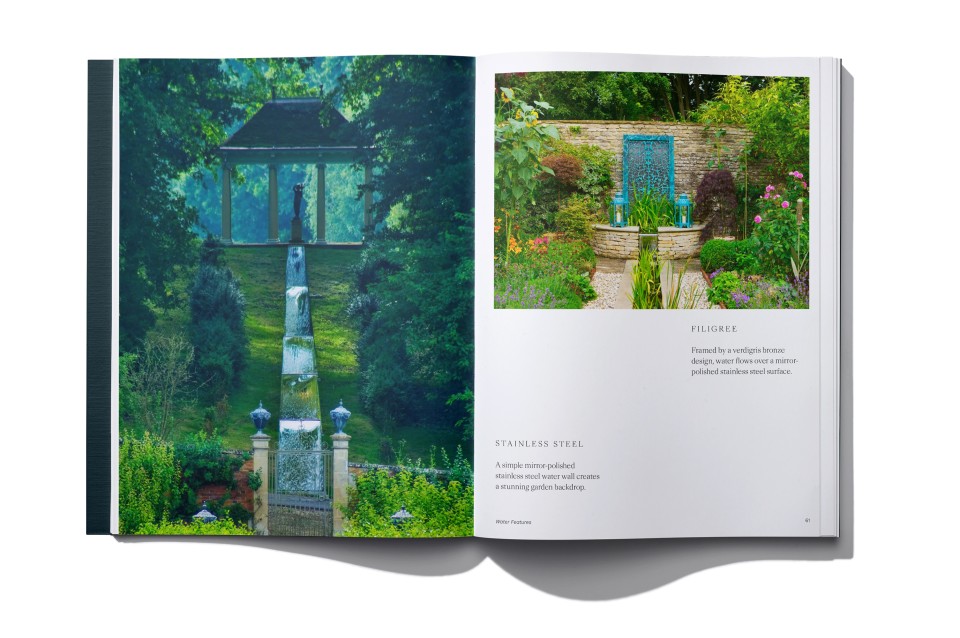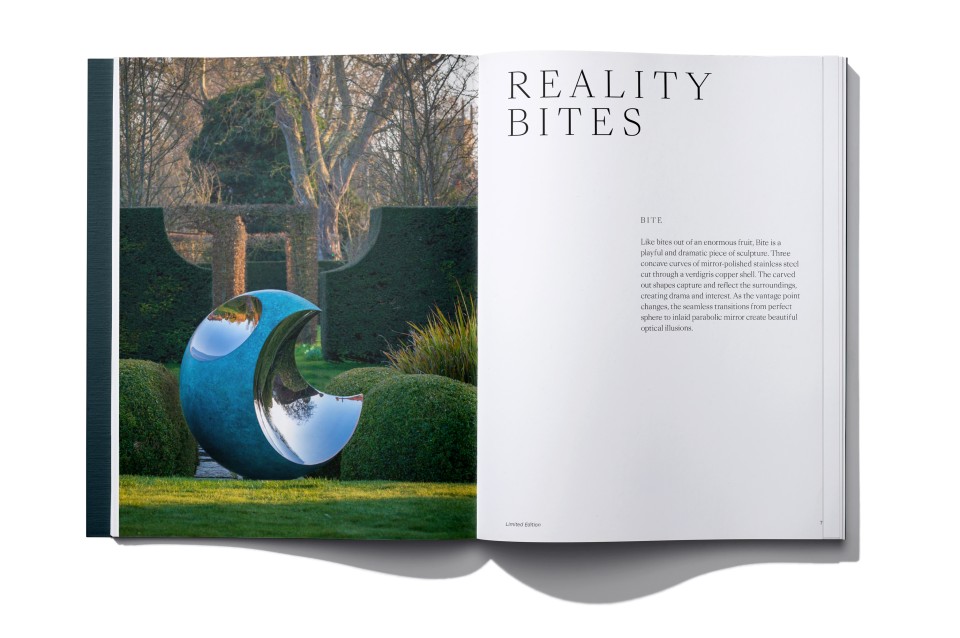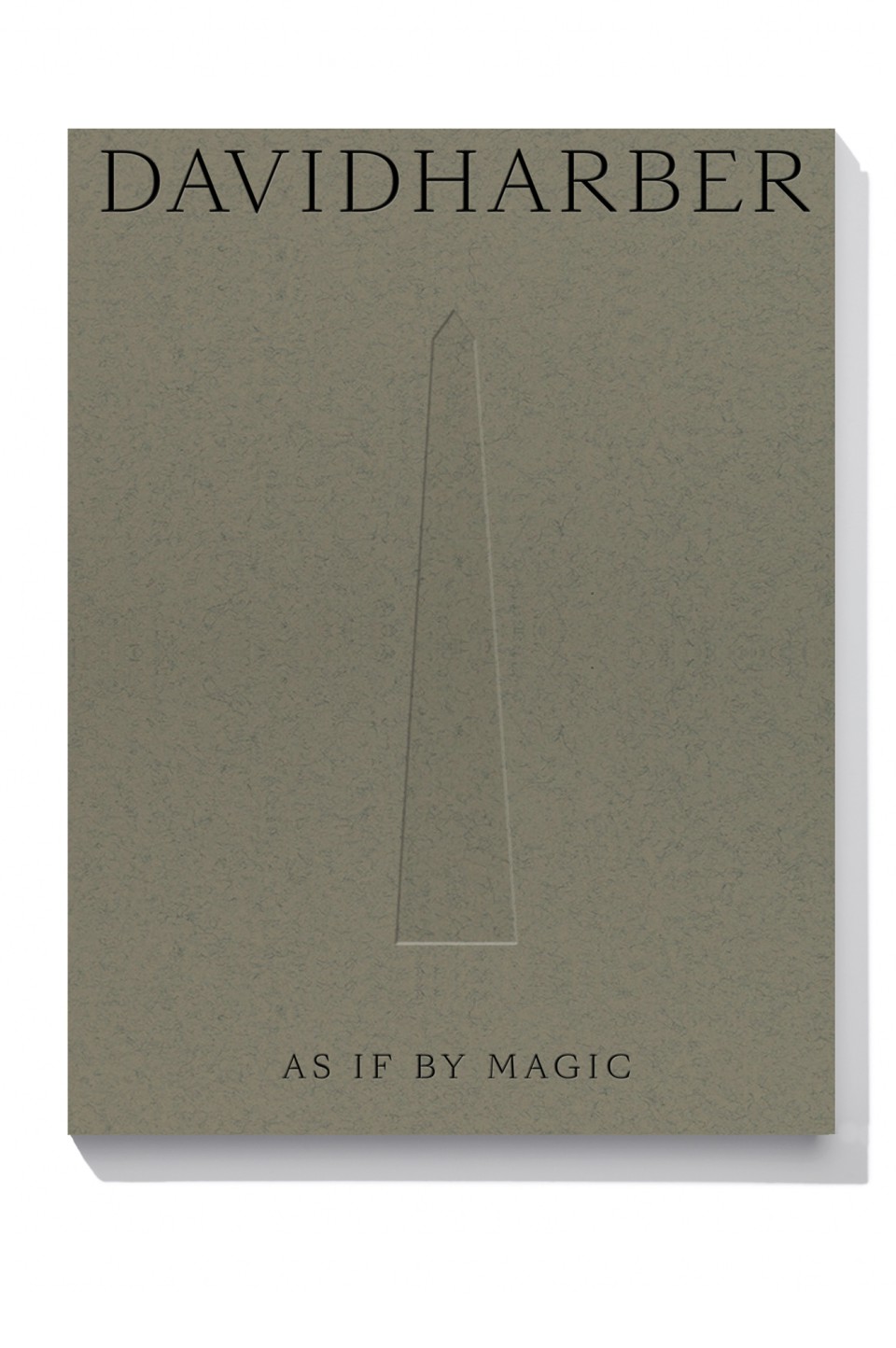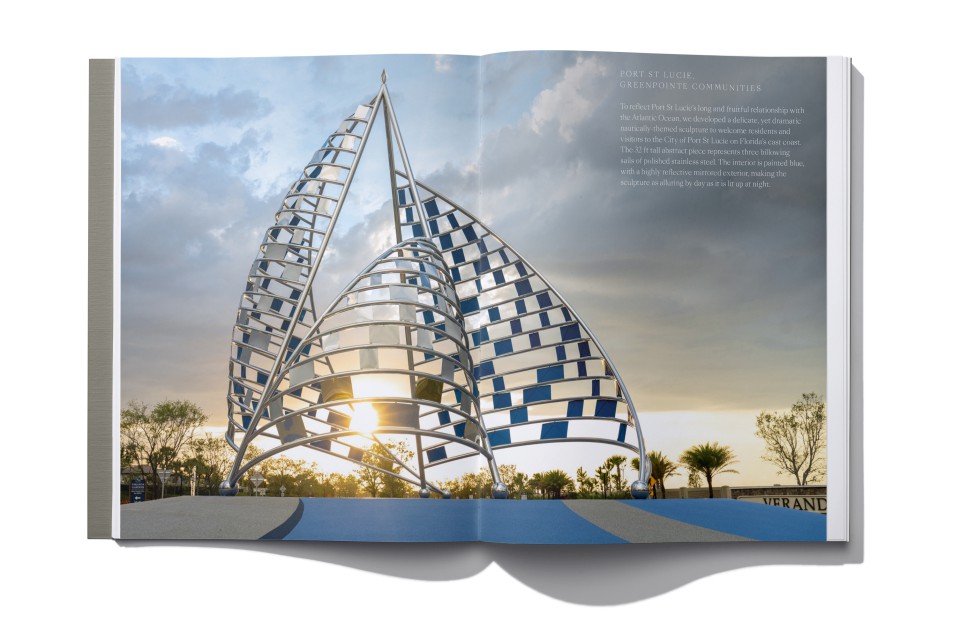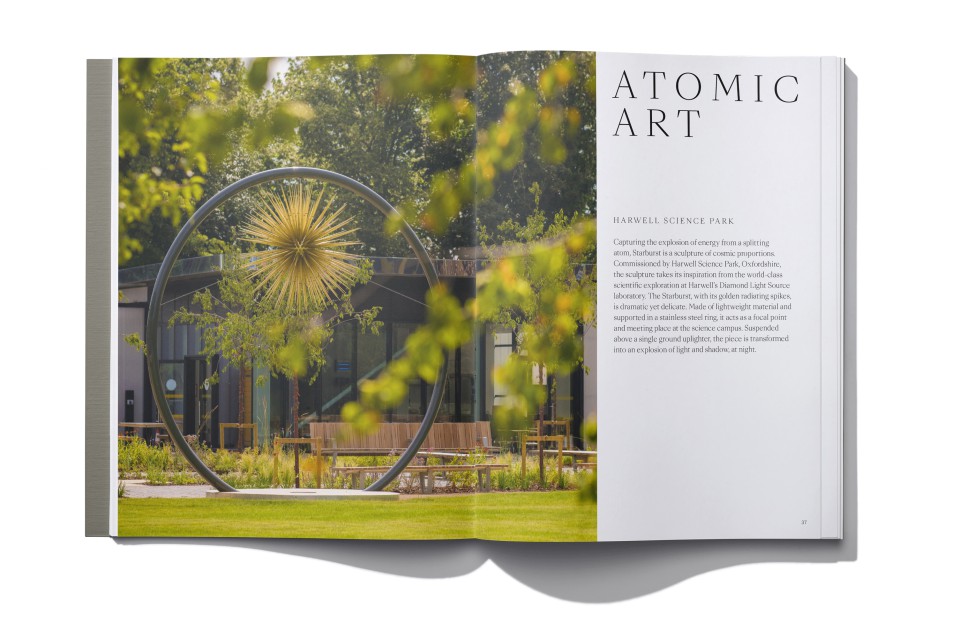Corten Steel Garden Sculpture
Oxidized Corten Steel has earthy, russet hues reminiscent of chestnuts and autumn leaves, and the tones and texture change in rain or bright sunlight. It’s an incredibly durable metal and can create a stunning contrast to crisp mirror-polished stainless steel.
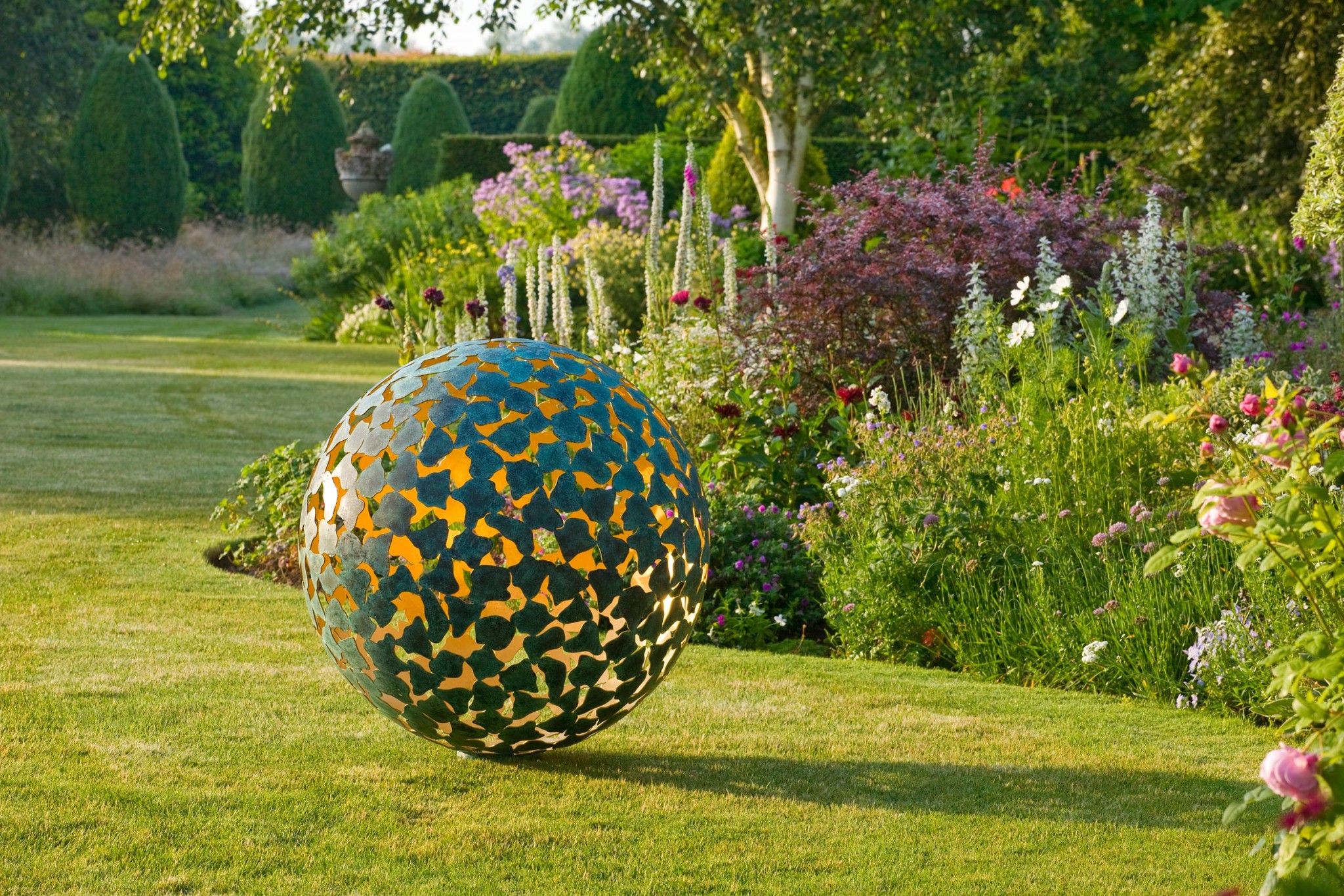
Mantle II
A metal garden sphere of gilded verdigris bronze petals and interior lighting for an ethereal glow.

Quill
Inspired by Mediterranean pencil pines, Quill is a tall, silent sentry in the landscape. Its delicate structure is fashioned from dozens of interconnected petals, individually cut from bronze, mirror-polished stainless steel or oxidised steel, and precision-welded together by our skilled craftsmen. Subtle internal lighting brings this elegant garden sculpture to life at night.
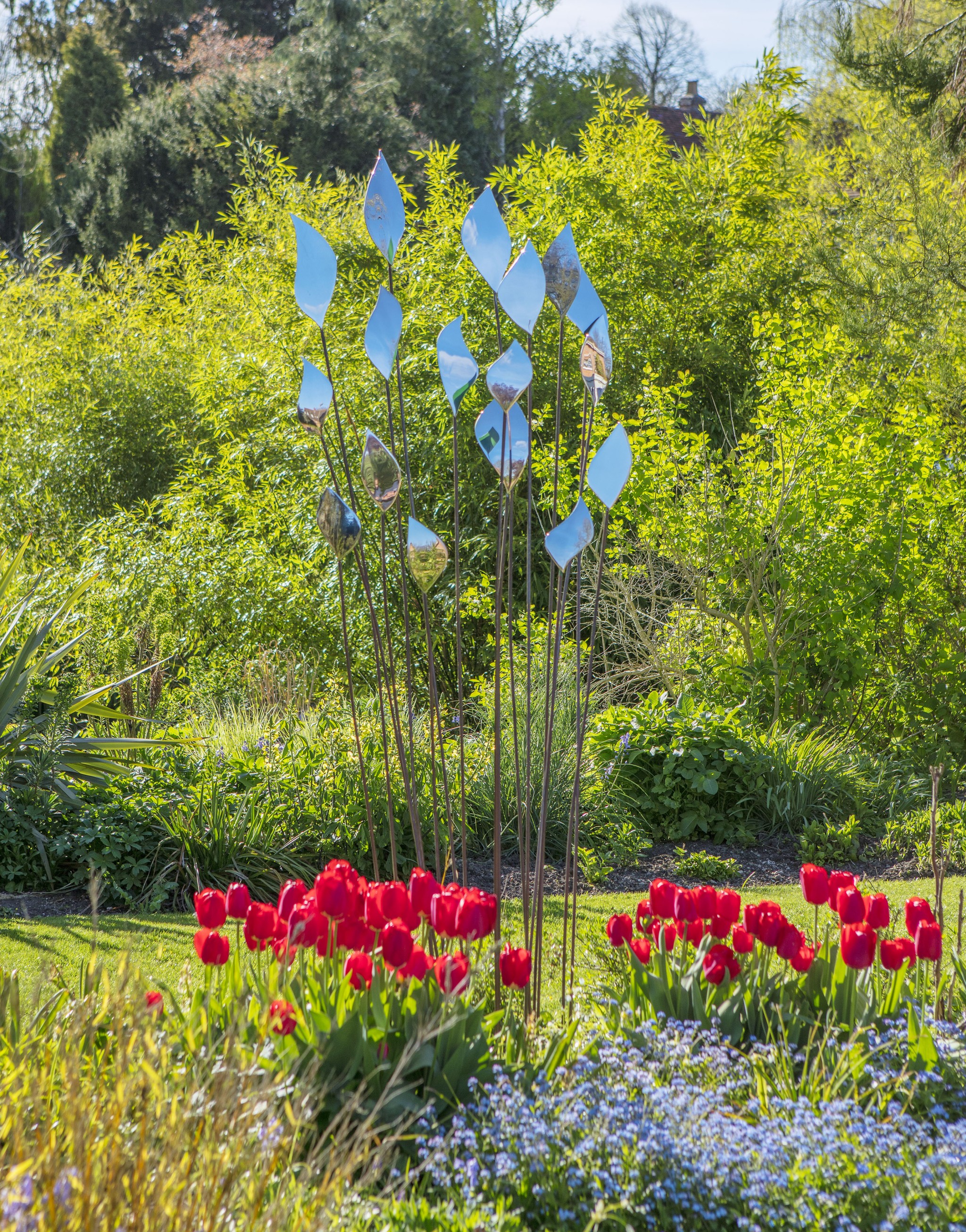
Quiver
Swaying on 15 elegant, reflective stems of stainless steel, Quiver’s gentle movement has a soothing kinetic effect.

Bite & Bite II
Resembling ‘bites’, the concave curves of these playful outdoor spheres create fascinating optical illusions in the mirrored stainless-steel.
Corten steel garden sculpture questions
One of the key differences between mild and Corten steel is how well the different metals stand up to difficult outside conditions. Corten is a modern invention which develops a protective coating in response to the oxidizing weathering process. This makes Corten very long-lived and suitable even for critical structures like bridges. Mild steel is less robust and not hardy enough for outdoor sculptures located near the sea, for example. “Mild steel in the right environment should last for centuries; Corten steel will last for centuries” explains David Harber.
The oxidization process, which takes place when either of the two rusty metal sculptures are exposed to the open air, also means that each piece of Corten outdoor art develops its own unique patina. “It’s like a fingerprint. They are all different,” says David Harber.
The other main difference between Corten and mild steel is price. Making Corten is a more involved process, so it is more expensive than mild steel. Corten outdoor sculptures are, as a result, more expensive than pieces made from mild steel.
At David Harber, we use mainly mild, or oxidized, steel for our standard range, although in most cases Corten steel can be specified.
Visually, it is difficult to tell the two apart. They are both an attractive, natural-looking, rusty color with an appealing textured surface that makes the metal look almost like a living material. Both steels react strongly to outside conditions, changing color in the rain, and looking vibrant and colorful when the sun comes out. Both rusty steels are easy to work with.
Well, that depends. You’ll need to consider the setting for the sculpture, your budget, and whether you want your outdoor art to last forever. David Harber will always talk you through the options to ensure that you make the best choice.
Corten is a type of weathered steel. Over time, it oxidizes and develops a rust-like appearance that naturally ties in with many styles of landscape design. This oxidization creates a protective layer, making it a strong, durable option when exposed to the elements. It’s a beautiful material for modern sculpture and outdoor decor.
Commonly used as a high-quality hard-landscaping material, Corten Steel has a rust-like finish which many people look for when designing an outdoor space for its instant aged look, as the effect is one of instant maturity in the garden. As if the elements have lovingly left their mark over decades. It’s used for decorative fence panels, artworks, outdoor decor and sculpture.
Making Corten is a more involved process, so it is more costly than mild steel. As a result, Corten outdoor sculptures are more expensive than pieces made from mild steel.
It can take several months to a year for Corten steel to develop its earthy, rusty tones. Mild steel has this effect straight away which is why we prefer to use it for our outdoor sculpture.
Corten steel is a modern invention which develops a protective, oxidized coating in response to weathering. Corten steel very durable and even suitable for critical structures like bridges. So, it’s very well suited to outdoor spaces.
Avoid any abrasive materials or chemicals when cleaning. Instead, use a soft cloth and warm water to gently remove any dirt. You can also use a garden hosepipe on a gentle setting to rinse away any unwanted build-up.
The magic of conversation
Whether you’ve decided on a piece, or you just want to sound out any aspect of our work, then please do get in touch.
